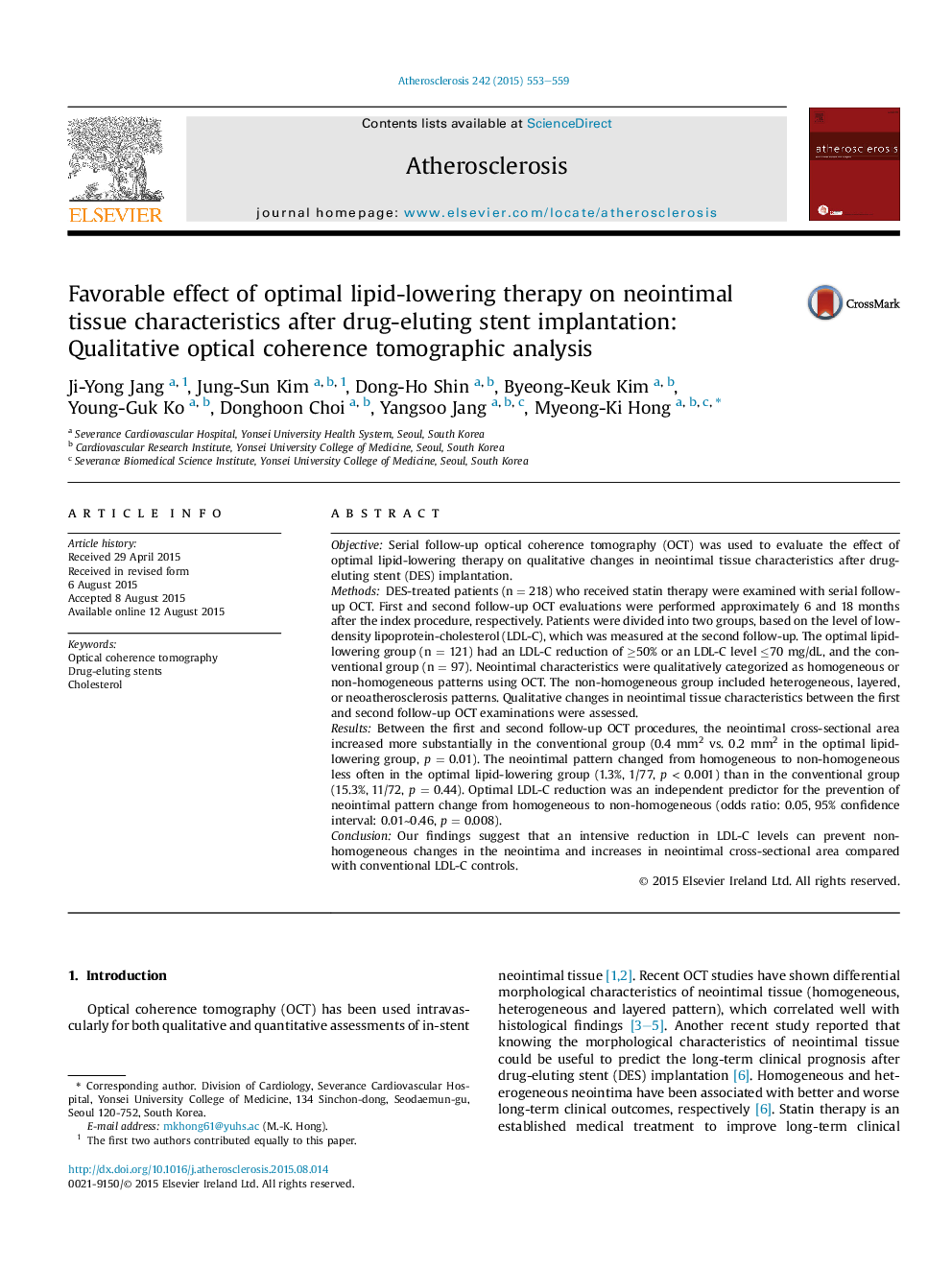| کد مقاله | کد نشریه | سال انتشار | مقاله انگلیسی | نسخه تمام متن |
|---|---|---|---|---|
| 5943843 | 1172339 | 2015 | 7 صفحه PDF | دانلود رایگان |
- There is no established intervention to modify neointimal tissue characteristics.
- Serial follow-up optical coherence tomographic studies were performed in larger number of patients with neointimal tissue.
- An intensive LDL-C control could play an important role in maintaining a favorable neointimal pattern and preventing a neotintimal growth.
ObjectiveSerial follow-up optical coherence tomography (OCT) was used to evaluate the effect of optimal lipid-lowering therapy on qualitative changes in neointimal tissue characteristics after drug-eluting stent (DES) implantation.MethodsDES-treated patients (n = 218) who received statin therapy were examined with serial follow-up OCT. First and second follow-up OCT evaluations were performed approximately 6 and 18 months after the index procedure, respectively. Patients were divided into two groups, based on the level of low-density lipoprotein-cholesterol (LDL-C), which was measured at the second follow-up. The optimal lipid-lowering group (n = 121) had an LDL-C reduction of â¥50% or an LDL-C level â¤70 mg/dL, and the conventional group (n = 97). Neointimal characteristics were qualitatively categorized as homogeneous or non-homogeneous patterns using OCT. The non-homogeneous group included heterogeneous, layered, or neoatherosclerosis patterns. Qualitative changes in neointimal tissue characteristics between the first and second follow-up OCT examinations were assessed.ResultsBetween the first and second follow-up OCT procedures, the neointimal cross-sectional area increased more substantially in the conventional group (0.4 mm2 vs. 0.2 mm2 in the optimal lipid-lowering group, p = 0.01). The neointimal pattern changed from homogeneous to non-homogeneous less often in the optimal lipid-lowering group (1.3%, 1/77, p < 0.001) than in the conventional group (15.3%, 11/72, p = 0.44). Optimal LDL-C reduction was an independent predictor for the prevention of neointimal pattern change from homogeneous to non-homogeneous (odds ratio: 0.05, 95% confidence interval: 0.01â¼0.46, p = 0.008).ConclusionOur findings suggest that an intensive reduction in LDL-C levels can prevent non-homogeneous changes in the neointima and increases in neointimal cross-sectional area compared with conventional LDL-C controls.
Journal: Atherosclerosis - Volume 242, Issue 2, October 2015, Pages 553-559
